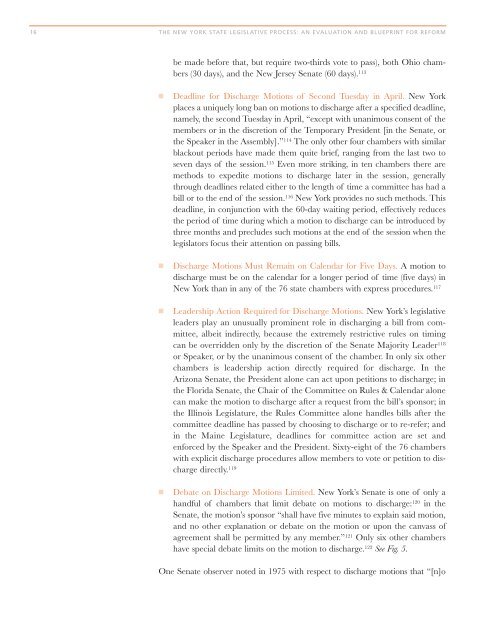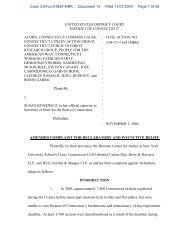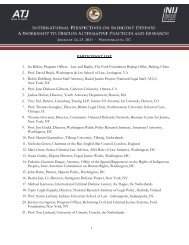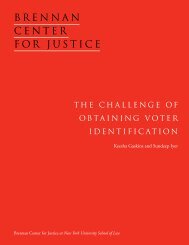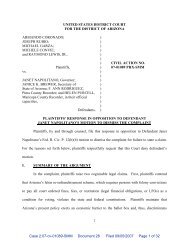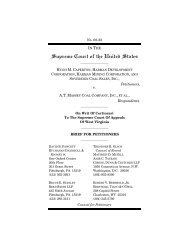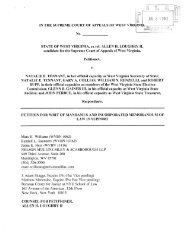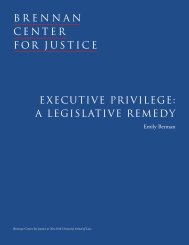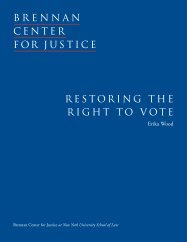THE NEW YORK STATE LEGISLATIVE PROCESS: AN ...
THE NEW YORK STATE LEGISLATIVE PROCESS: AN ...
THE NEW YORK STATE LEGISLATIVE PROCESS: AN ...
You also want an ePaper? Increase the reach of your titles
YUMPU automatically turns print PDFs into web optimized ePapers that Google loves.
16 <strong>THE</strong> <strong>NEW</strong> <strong>YORK</strong> <strong>STATE</strong> <strong>LEGISLATIVE</strong> <strong>PROCESS</strong>: <strong>AN</strong> EVALUATION <strong>AN</strong>D BLUEPRINT FOR REFORM<br />
be made before that, but require two-thirds vote to pass), both Ohio chambers<br />
(30 days), and the New Jersey Senate (60 days). 113<br />
■ Deadline for Discharge Motions of Second Tuesday in April. New York<br />
places a uniquely long ban on motions to discharge after a specified deadline,<br />
namely, the second Tuesday in April, “except with unanimous consent of the<br />
members or in the discretion of the Temporary President [in the Senate, or<br />
the Speaker in the Assembly].” 114 The only other four chambers with similar<br />
blackout periods have made them quite brief, ranging from the last two to<br />
seven days of the session. 115 Even more striking, in ten chambers there are<br />
methods to expedite motions to discharge later in the session, generally<br />
through deadlines related either to the length of time a committee has had a<br />
bill or to the end of the session. 116 New York provides no such methods. This<br />
deadline, in conjunction with the 60-day waiting period, effectively reduces<br />
the period of time during which a motion to discharge can be introduced by<br />
three months and precludes such motions at the end of the session when the<br />
legislators focus their attention on passing bills.<br />
■ Discharge Motions Must Remain on Calendar for Five Days. A motion to<br />
discharge must be on the calendar for a longer period of time (five days) in<br />
New York than in any of the 76 state chambers with express procedures. 117<br />
■ Leadership Action Required for Discharge Motions. New York’s legislative<br />
leaders play an unusually prominent role in discharging a bill from committee,<br />
albeit indirectly, because the extremely restrictive rules on timing<br />
can be overridden only by the discretion of the Senate Majority Leader 118<br />
or Speaker, or by the unanimous consent of the chamber. In only six other<br />
chambers is leadership action directly required for discharge. In the<br />
Arizona Senate, the President alone can act upon petitions to discharge; in<br />
the Florida Senate, the Chair of the Committee on Rules & Calendar alone<br />
can make the motion to discharge after a request from the bill’s sponsor; in<br />
the Illinois Legislature, the Rules Committee alone handles bills after the<br />
committee deadline has passed by choosing to discharge or to re-refer; and<br />
in the Maine Legislature, deadlines for committee action are set and<br />
enforced by the Speaker and the President. Sixty-eight of the 76 chambers<br />
with explicit discharge procedures allow members to vote or petition to discharge<br />
directly. 119<br />
■ Debate on Discharge Motions Limited. New York’s Senate is one of only a<br />
handful of chambers that limit debate on motions to discharge: 120 in the<br />
Senate, the motion’s sponsor “shall have five minutes to explain said motion,<br />
and no other explanation or debate on the motion or upon the canvass of<br />
agreement shall be permitted by any member.” 121 Only six other chambers<br />
have special debate limits on the motion to discharge. 122 See Fig. 5.<br />
One Senate observer noted in 1975 with respect to discharge motions that “[n]o


